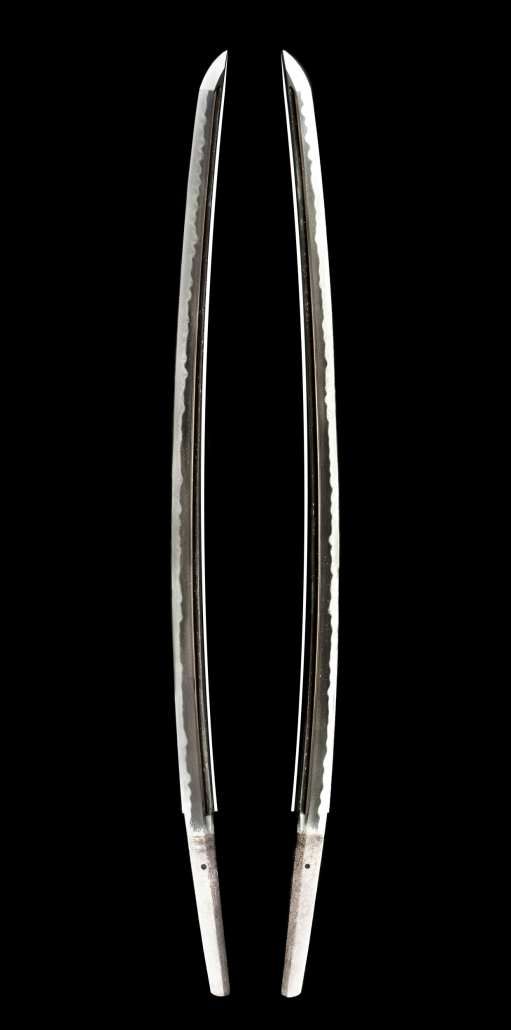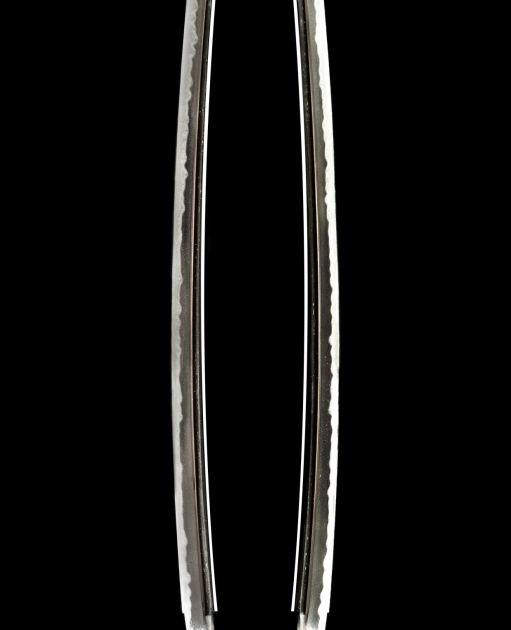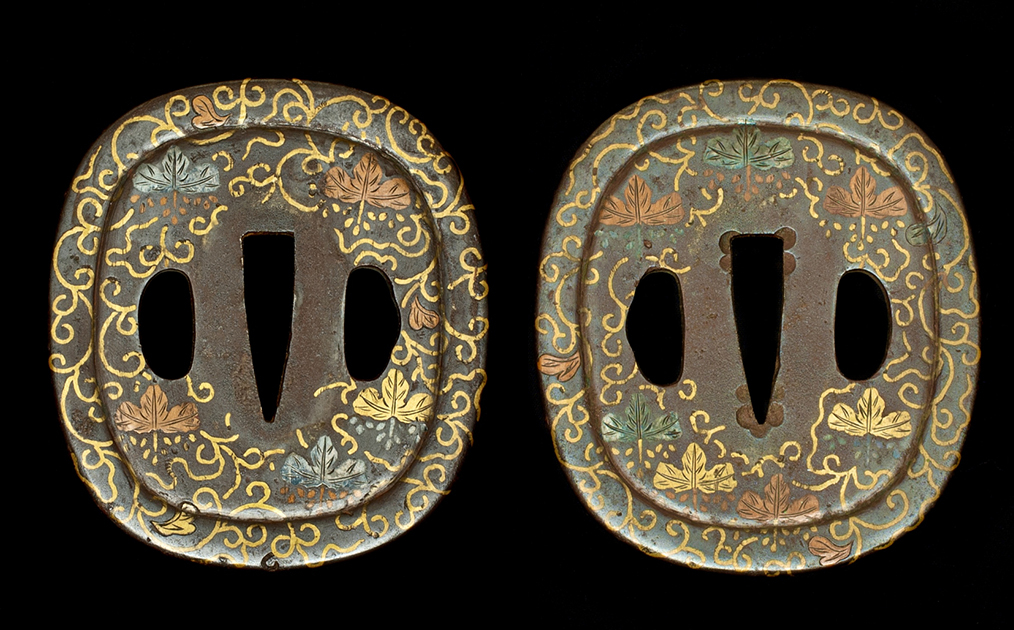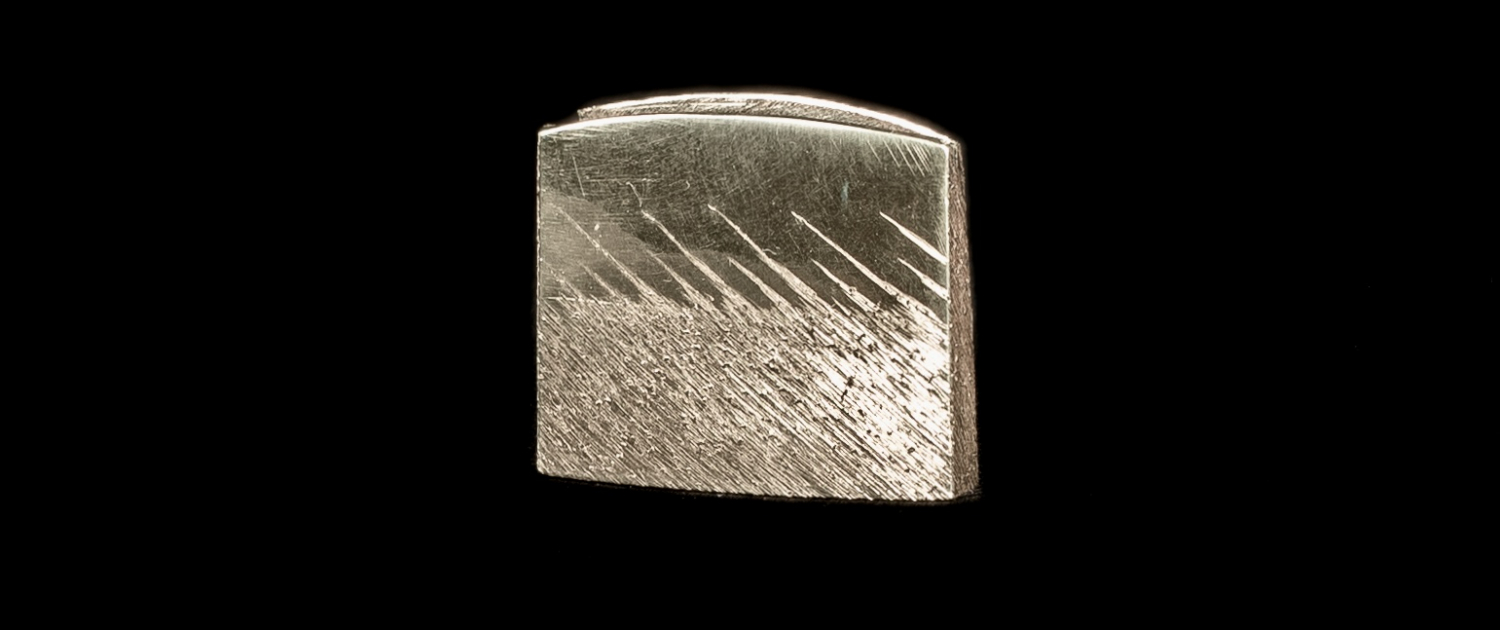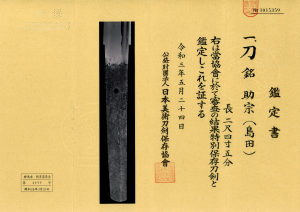Dimensions
Nagasa : ~ 75 cm
Sori : 2.15 cm
Sakihaba : 24 mm
Motohaba : 33 mm
Kasane : 6.2 mm
Omosa : 780g
Certificate – Origami
NBTHK Tokubetsu Hozon Tōken
« Work especially worthy of preservation»
Description
Katana
Mei : 助宗 (Sukemune)
Sugata : Shinogi-zukuri, mitsu-mune, chūgissaki
Kitae : Itame, Mokumue
Hamon : Ko-nie deki, gunome-choji, ko-gunome, ashi
Boshi: Midarekomi, hakikake
Hi/Engraving : Bo-hi
Nakago : Ubu
Koshirae
Style : Shonai
Saya : Dark red lacquered with blue pearls
Tsuba : Iron, iroe-zōgan, Kiri motifs
Fushigashira : Iron, En suite
Menuki : Golden Phoenix
Habaki : Golden Yūjō-habaki
Swordsmith and school
Although there were several generations of smiths bearing the name “Sukemune” between the 15th and 16th centuries, the most famous one remains the one who worked between the Tenbun and Eiroku eras (1532-1570). In fact, Sukemune, whose real name was Gojo Kyuzaemon, is a famous smith belonging to the Shimada school in the province of Suruga. This tradition originated in the mid-15th century, under the leadership of Shodai Yoshisuke, also known as “Gisuke”.
The origin of the latter remains quite unclear. According to some chronicles of the Edo era, Yoshisuke was a smith from Bizen to settle in Suruga, while in other writings, he is mentioned as a hidden disciple of the grand master Masamune. Nevertheless, because of their anachronism and lack of supported documents, it is known that these two theories are more mythical and remain withoutA real historical basis.
The most serious track indicates that it was under the protection of the Imagawa clan, and its Daimyō Yoshitada (1436-1476), that the 1st generation Yoshisuke developed his art and initiated the rise of the Shimada school. Later, he received on an honorary basis, the kanji 義 (Yoshi), for the quality of his work. Among all his works bequeathed to posterity, there is a spear (yari) of very great importance called “Otegine”. Unfortunately, destroyed during the Second World War, it is still considered one of the three great spears that have never been forged, and an intangible treasure of Japan.
Sukemune, like its predecessor, also left an important heritage, such as the famous tantō “Osoraku”, and of which one of its most illustrious owners was none other than the great warlord Takeda Shingen, a major figure of the Sengoku-jidai at the end of the 16th century.

